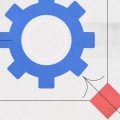The Critical Path Method (CPM) is a powerful tool for project managers and process improvement professionals who are looking to streamline their processes and make sure that their projects are completed on time. CPM is a methodology that allows project managers to identify the tasks that must be completed to finish a project, and the order in which they must be completed. CPM also helps project managers to better understand the dependencies between tasks and how these dependencies can affect the duration of a project. By understanding these dependencies, project managers can better plan their resources and budget accordingly to ensure that their projects are completed on time and on budget. This article provides a comprehensive overview of CPM, including an explanation of its core concepts, its key components, and how it can be used to improve process efficiency.
We will also discuss some of the challenges associated with using CPM and how to address them. Finally, we will provide some tips for implementing CPM in your organization.
Applications of the Critical Path Method (CPM)
The Critical Path Method (CPM) is a powerful tool that can be used in a variety of industries to improve project management. CPM can be used to identify and manage dependencies and tasks, as well as to identify activities that are critical to the completion of a project. CPM also allows for tasks to be delayed without impacting the overall timeline of the project.CPM is used in many industries, including construction, engineering, software development, manufacturing, and healthcare. In construction, for example, CPM helps identify which tasks must be completed in order for a project to be completed within the desired timeline. In engineering, CPM can be used to ensure that all of the components of a project are being completed on time and within budget. In software development, CPM can help identify which tasks must be completed in order for the software to function correctly.
In manufacturing, CPM can help identify the most efficient way to produce a product. Finally, in healthcare, CPM can help identify tasks that must be completed in order for a patient’s health to improve. CPM is an invaluable tool for any industry that requires efficient and successful project management. It helps identify tasks that are critical to the completion of a project and allows for tasks to be delayed without impacting the overall timeline of the project. By utilizing CPM, organizations can ensure that their projects are completed on time and within budget.
What is the Critical Path Method (CPM)?
Critical Path Method (CPM) is a process improvement tool used to identify and manage dependencies and tasks in order to ensure the successful completion of a project. It helps to identify the critical activities that must be completed on time in order to meet the overall timeline of the project, as well as any tasks that can be delayed without affecting the timeline. CPM is used to plan, schedule, and control projects. The CPM works by creating an activity network diagram which shows the sequence of activities and their respective durations.Each activity is represented by an arrow and its duration is indicated by the length of the arrow. Once the activity network diagram is created, CPM can be used to calculate the expected length of the project and identify any potential delays or critical paths. CPM also allows for the identification of any tasks that can be delayed without affecting the overall timeline of the project. CPM can be used to improve project management by helping to identify any potential delays, allowing for better planning and scheduling, and providing an accurate representation of a project's timeline.
Additionally, CPM can be used to minimize costs and optimize resources by determining which tasks are more time-sensitive and need to be completed first. In summary, Critical Path Method (CPM) is a powerful tool used in project management to identify and manage dependencies and tasks in order to ensure an efficient and successful project completion. CPM helps identify the activities that are critical to the completion of a project, as well as any tasks that can be delayed without affecting the overall timeline of the project.
Benefits of Using the Critical Path Method (CPM)
The Critical Path Method (CPM) is a powerful tool for project managers, offering numerous advantages to help ensure project success. CPM is especially helpful for larger projects, where it can be difficult to keep track of all the interrelated tasks and dependencies.Here are some of the key benefits of using the Critical Path Method:Time and Cost Savings:CPM helps project managers identify the tasks that are critical to the completion of a project and any tasks that can be delayed without affecting the overall timeline. This enables project managers to better manage their timelines and budgets, as they can focus resources on the critical tasks and delay non-essential tasks. This often leads to time and cost savings.
Reduced Risk:
By providing an accurate view of the project timeline and budget, CPM helps project managers identify any potential risks and take the necessary steps to mitigate them. This reduces the chances of project delays or budget overruns due to unforeseen circumstances.Improved Communication:
The visual representation of tasks and dependencies provided by CPM helps project teams communicate more effectively.This enables everyone involved in the project to have a better understanding of what needs to be done, when it needs to be done, and how it will affect the overall timeline and budget.
Increased Productivity:
CPM helps project teams focus on the most important tasks, which can lead to increased productivity. This is especially useful for larger projects, where it can be difficult to manage multiple tasks at once. CPM also allows for better resource allocation, which can further increase productivity.Tips for Successfully Implementing the Critical Path Method (CPM)
Successfully implementing the Critical Path Method (CPM) requires an understanding of the process and an eye for detail. To ensure a successful CPM project, here are some tips to keep in mind:1.Map Out Dependencies:The first step in successfully implementing CPM is to identify and map out all of the project's dependencies.This includes identifying tasks that are dependent on other tasks, as well as tasks that are not dependent on any other task. This will help project managers identify the critical path and ensure that no steps are missed.
2.Define Project Objectives:
Before beginning a CPM project, it is important for project managers to define what the objectives of the project are. This will help ensure that all tasks are completed in the right order, as well as help project managers prioritize tasks if needed.3.Establish Clear Communication:
Clear communication is essential when it comes to successfully implementing CPM. Project managers should ensure that everyone involved understands the objectives of the project, as well as any changes that may occur during the process.This will help ensure that everyone is on the same page and working towards the same goal.
4.Track Progress Regularly:
Regularly tracking progress will help project managers stay on top of any issues that arise during the process, as well as help them identify any areas where delays might be occurring. Tracking progress also allows for quick adjustments to be made if needed.5.Use Automation Tools:
Automation tools can be extremely helpful when it comes to managing a CPM project. Automation tools can help streamline processes, such as task management and resource allocation, as well as help project managers identify potential problems before they arise.Using the Critical Path Method (CPM) in Combination with Other Tools
The Critical Path Method (CPM) is an effective tool for project management, but it can be even more effective when used in combination with other tools and techniques. By combining CPM with other tools and techniques, project managers can identify and manage dependencies and tasks more efficiently, leading to greater success in completing the project on time and within budget.One popular way to use CPM in combination with other tools is to leverage both agile and traditional project management approaches. Agile methods focus on flexibility and continual adaptation, while CPM focuses on developing a schedule that accounts for all of the necessary tasks and dependencies. By combining these two approaches, project managers can benefit from both agility and planning for successful project completion. Another way to use CPM in combination with other tools is to incorporate Earned Value Analysis (EVA).
EVA is a method of evaluating the progress of a project based on its budget, timeline, and scope. EVA helps project managers measure how much value has been “earned” at any given point during the project. By combining EVA and CPM, project managers can track progress more accurately, as well as identify areas where tasks have been delayed or completed ahead of schedule. This information can be used to make adjustments to the project’s timeline or budget as needed.
Finally, CPM can be used in combination with other tools to identify potential risks associated with the project. Risk management is an important part of any successful project, and CPM can help identify any potential risks that could affect the timeline or budget of the project. By using CPM in combination with other risk assessment tools, project managers can create a comprehensive plan to manage risks more effectively. The Critical Path Method (CPM) is an effective tool for project management, but when used in combination with other tools and techniques, it can be even more powerful.
By leveraging agile methods, EVA, and risk assessment tools in combination with CPM, project managers can ensure a successful project completion. The Critical Path Method (CPM) is an essential tool for project management, helping to identify and manage dependencies and tasks for successful project completion. It is beneficial for reducing costs, improving efficiency, and making better decisions about resource allocation. CPM can be used alone or in combination with other tools to maximize the effectiveness of project management. Through this article, we have seen the many ways CPM can be used to create a successful project and now it's time to put that knowledge into action.
So take the information you've learned here and start using CPM to help your project succeed.


